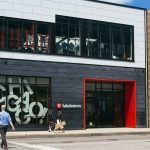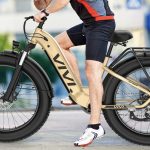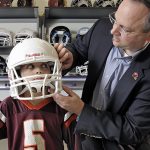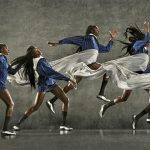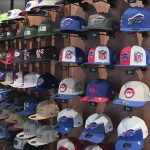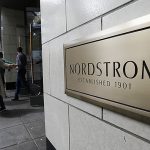In the 60 days since naming former Nike and Disney executive Andy Mooney as CEO, Quiksilver has closed businesses, divested others, hired several new C-level executives who will shift the company toward a more centralized business model and even whittled down its roster of team athletes in bid to cut costs and enhance performance across its core Quiksilver, Roxy and DC brands.
Mooney outlined the changes in his first earnings call since taking the reins at the action sports company Jan. 11. ZQK reported a net loss of $30.6 million in the first quarter ended Jan. 31, when net revenues dipped 3 percent in currency-neutral (c-n) terms to $431.0 million.
Net revenues declined 9 percent to $186 million in the Americas due to store closures and $15 million shortfall in the wholesale channel.
Executives attributed $8-9 million of the shortfall to a decision to delay shipments of Quiksilver and Roxy products to wholesale clearance channels until after later-than-normal shipments of Spring 2013 product. Those sales are expected to occur in the ongoing quarter. Both brands saw higher returns and markdowns as well a slower sell-through in some key accounts. The DC shoe business had higher returns and markdowns than anticipated and failed to meet its wholesale and e-commerce revenue goals for the quarter. E-commerce revenues were flat in the region.
EMEA net revenues increased 1 percent to $171 million from $169 million, and were up 2 percent in constant currency. APAC net revenues decreased 2 percent to $73 million from $75 million, and were down 1 percent in constant currency. Revenues were down significantly in Spain, modestly in France, but grew significantly in Germany, Russia and in the U.K. Revenues were up in the Asia-Pacific with double-digit growth in Indonesia, low-single-digit growth in Japan and a small decline in Australia, where retail margins are holdings.
Broken down by brand, revenues declined $13 million, or 7 percent in currency-neutral (c-n) terms, to $179 million at Quiksilver; declined 7 percent to $115 million at Roxy; and were up 1 percent to $109 million at DC despite a falling by $3 million in the Americas. Globally, Wholesale revenues fell 8 percent to $268 million and Retail revenues slipped 1 percent to $129 million as modest comp gains were more than offset by store closures. First quarter same store sales in company-owned retail stores decreased 1 percent on a global basis; and, E-commerce was up 39 percent to $33 million.
Gross margin increased to 30 basis points to 51.0 percent, primarily due to a shift toward our more profitable segments and e-commerce sales. The Americas segment and the wholesale distribution channel, which experienced the largest percentage decreases in net revenues, typically have lower gross margins compared to the companys other segments and channels. SG&A decreased $5 million to $225 million due to ongoing cost cutting which was partially offset by a $4 million increase in e-commerce expenses associated with the continuing online initiatives. Pro-forma Adjusted EBITDA fell $7 million to $13 million, due in large part to a $5 million change in foreign currency loss.
Mooney outlined elements of an operating plan he will present to ZQKs board next month that include narrowing and clarifying the focus of the companys three largest. Since his arrival, Quiksilver has closed the VSTR brand and passed the management of the Summer Teeth brand back to its owner, surfer and marquee Quiksilver athlete Dane Reynolds.
At the brand level, the company will refocus its three top brands on their roots. Quiksilver will refocus as a male surf and snow brand, Roxy as the flagship womens brand and DC as a skateboarding and snowboarding brand. Both Quiksilver and Roxy have exited the skate business and DC has exited surf. Mooney said sales of Quiksilver Womens and Quiksilver Girls lines were cannibalizing sales of Roxy apparel and taking space away from mens wear in its stores.
The profit was just not there, said Mooney. we have 30-some people who had given their all to make that a success and they had done well driving top line, but the bottom line wasnt there, and we really needed to focus with both the Quiksilver brand and the Roxy brand.
Mooney intends to fundamentally change the orientation of ZQK from three largely autonomous units that operate entrepreneurially but relatively inefficiently toward a model of global collaboration. The company has essentially been moving toward that model with product design by migrating work from 20 locations to two major centers of excellence at its U.S. and European headquarters in Huntington Beach, CA and France. Board shorts, for instance, are now designed in Huntington Beach, while outerwear is designed in Europe. The approach enables higher volumes over fewer SKUs.
Having fewer, better products is better for the brand than having more, average products, Mooney said.
In the executive suite, new hires have included fellow Nike veteran Tom Hartge as global head of footwear and Kasey Mazzone as global head of supply chain. Mazzone, who has worked at Land’s End, American Eagle, GAP and Levi Strauss, will focus on driving down vendor pricing through style rationalization, demand aggregation and vendor consolidation. Pierre Agnes was named president of Quiksilver Europe and taking on additional responsibilities as global head of apparel. Mooney is actively recruiting chief marketing officer and filling in as interim CFO until he fills that position.
Mooneys impact has also been felt on the front lines of marketing.
Over the last few weeks, we reduced the number of athletes under contract to free up resources to better promote those athletes who can best drive our brand and product messages effectively, Mooney said. A key athlete should be household names, known well beyond the universe of core fans.
CFO Richard Shields said wholesale shipments are proceeding as expected and indicate new outdoor lines introduced by Quiksilver and Roxy are resonating with dealers. Mooney said sales of Roxys new DVF (Diane von Furstenberg) collection wildly exceeded expectations and the company will increase collaborations with artist and designers across all three brands going forward. Mooney sees ZQK continuing to develop fully segmented lines for major accounts such as department stores.
Going forward he sees opportunities to generate incremental revenue in adjacent categories, such as beach towels, pants and underwear through licensing deals. In the U.S., he expects to prune inline stores and increase outlets.
The reality is that other brands, entire companies like Hollister are basically trading off the ethos and the lifestyle of Action Sports and really our entire industry, all the brands within it and all the retail partners within it are not — unable to capitalize on that, said Mooney. So that is the both the challenge and opportunity is how do we continue to grow our 3 brands and foster the growth within the core channel that is so fundamental to us.

